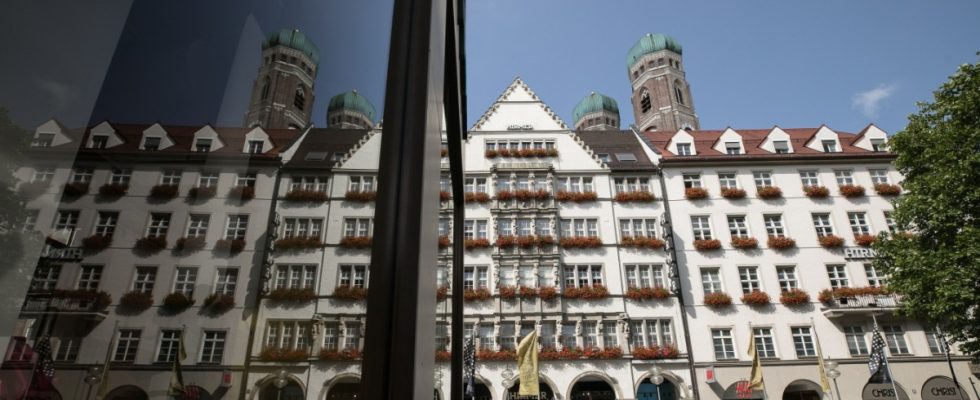Despite the Benko bankruptcy, the uncertain future of large construction sites in the center and numerous empty shops around the pedestrian zone, there is no need to worry too much about the economic future of Munich city center. This is the core message of a new study by the Institute for Trade Research (Cologne) and the Stadt+Handel agency (Hamburg), which was commissioned by the Department of Labor and Economy. On Thursday this was presented to selected representatives from the city and trade.
Even before Corona and the Ukraine war, it was clear that the structure of city centers was changing significantly: pure shopping miles were to become places of experience. Large construction projects, new pedestrian zones and more greenery – change in the city is in full swing. According to the study, the starting position in Munich is very good. All economic and labor market policy signs are currently green. In a Germany-wide comparison, the city center takes the top spot. Characterized not only by local passers-by and visitors from the surrounding area, but also by shoppers from different cultures and nationalities.
Unlike many German city centers, traditional businesses or family businesses that have been established for many years still determine the image of the city in Munich. The study comes to the conclusion: The Munich center is popular with tourists and locals alike and is rated better than any other city center in Germany.
That doesn’t mean that Munich can rest on its laurels. Simply satisfying consumption is no longer enough. Streets and squares should be designed in such a way that people enjoy being there. There are still “shady areas” that could shine a little brighter. The best example is Georg-Kronawitter-Platz in the rear area of the pedestrian zone. According to the study, if we succeed in creating an attractive new location here, it will have a positive impact on the entire city center.
Change in the center is progressing. Well-known buildings, such as the C&A complex in the pedestrian zone or the Kaufhof am Stachus, will have new uses. But changes often take a very long time. Georg-Kronawitter-Platz is once again a prime example. The design has been debated for decades. It goes even longer at Max-Joseph-Platz in front of the opera and the Residenz. Now an agreement has been reached on planting the stone area. Achieving that was hard enough.
A car-free city center? “An absurdity”
But when it comes to adding a few more trees to other areas of the center, you run into difficulties, as construction officer Jeanne-Marie Ehbauer reports. During site investigations, the first critical voices from business operators can already be heard. Tina Haller from Inselkammer-Immobilien and responsible for the renovation of the C&A house would like to see more innovative construction and usage concepts. You could learn from Berlin, for example. Wolfgang Puff from the Bavarian Trade Association attaches great importance to easy accessibility to the city center. Making it completely car-free would be absurd. After all, the city council has just decided to test electric microbuses and e-rickshaws. The best example of this, according to the study, is trying out the available options in real operation.
For Eva Schömann from the Hotel Sofitel Munich Bayerpost, more quality of stay in the center means more culture on the streets and squares. Large concerts in Riem are one thing, but events should also be offered in the city center. Cultural organizer Till Hofmann sees it the same way. He also calls for permanent and affordable spaces for creative initiatives, instead of short-term temporary uses.
Tradition and change – this balance must be maintained in the city center, says innkeeper Gregor Lemke (Augustiner am Dom). The visitors to the old town valued this mixture and would certainly enjoy it if they could sit outside in front of the restaurants for longer in the evenings during the warm season. Last but not least, you also have to think about the interests of children and young people, says city planning officer Elisabeth Merk, for example by building playgrounds.
Wolfgang Fischer represents the interests of downtown retailers. “We don’t have to hide our light under a bushel,” he says. However, it is also true that changes are necessary to maintain the high quality of the city center.

